International Tea Day brews big interest in chai destinations in India
As interest in tea tourism grows ahead of International Tea Day, here’s a detailed look at India’s top tea tourism destinations and what they have to offer travellers.
Tea isn’t really, well, my cup of tea. Give me a cup of strong coffee to kickstart the day. However, when it comes to vacations, tea does brew a lot of ideas and plans in my mind—including plantation tours and tea tastings.
It seems many others are also thinking of tea this summer.
Ahead of International Tea Day, which is celebrated on May 21, there has been a surge in searches for Ooty, Palampur, and Chikmagalur, renowned for their tea culture and historical significance, followed by the tea garden destinations of Darjeeling and Munnar.
Why does tea hold a special place in the hearts of Indians and how did it become a habit for many?
The journey of tea in India may be irrevocably linked to the British, but it didn’t begin with them. Way back in the 12th century, the Singpho people and a few other indigenous groups made a beverage of tea growing in the wild and consumed it for its health benefits. Researchers report the consumption of tea in Indian cities near trade routes with China, Europe, and the Middle East.
In A Voyage to Surat in the Year 1689, English traveller John Ovington observed that Indian traders drank tea “with some hot spice…with sugar-candy, or, by the more curious, with some conserv’d lemons.”
Growing conflict between Britain and China by the late 18th century led to industrial tea production in India.
In A Thirst for Empire: How Tea Shaped the Modern World, food historian Erika Rappaport wrote that, even as the British and Chinese increasingly viewed each other as barbarians, the British “could no longer live without tea”.
Britain’s relations with China escalated into war when tea trade ended, and the British began looking for alternative sources. They expanded their reach to Assam, and, recognising the indigenous variety of tea here, they began to clear the jungles for tea plantations.
The tea industry in India rapidly expanded in the 1850s, with the creation and growth of numerous tea plantations. Assam became the leading tea-producing region in the world by the turn of the century. Following a successful advertising campaign by the India Tea Board, tea-drinking gradually became a national habit in the 1950s.
Today, India is the second largest producer of tea in the world after China, and is renowned for its Assam and Darjeeling varieties. The major tea-producing states in India are Assam, West Bengal, Tamil Nadu, Tripura, Arunachal Pradesh, Karnataka, Kerala, Sikkim, and the northeastern states.
Immersive experiences
The land of chai has expansive tea plantations where visitors get an idea of tea culture in the backdrop of stunning vistas. Many Indian travellers are increasingly seeking immersive experiences and guided tours at tea plantations where they get to witness the meticulous process behind producing some of the world’s finest teas.
Krishna Rathi, Senior Country Director, India Subcontinent and Maldives, at travel services firm Agoda, says it’s not surprising to see travellers increasingly searching for new experiences or exploring the heritage and culture that India has to offer.
“Indian travellers love to go abroad to unexplored destinations, but they also appreciate how much there is to see and do within their own borders and discover India’s landscapes and culture. The increasing popularity of destinations like Ooty and Palampur showcasing India’s unique chai experiences is a prime example of this,” he said.
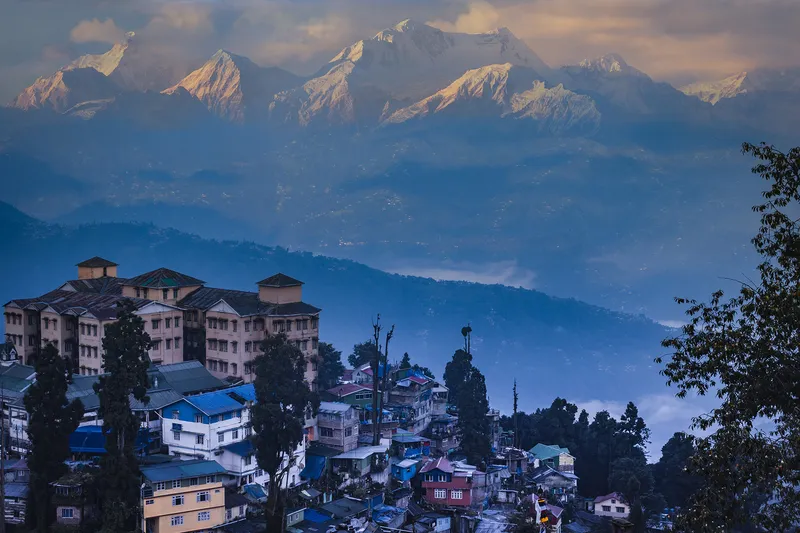
Numerous hill stations in India offer the chance to explore lush green tea plantations and more.
Ooty, which is nestled in the Nilgiri Hills, offers panoramic views of the mountains and aromatic tea experiences. It reported the highest increase in searches made on Agoda’s digital platform (46%) in the first quarter of 2024, compared to the same period in 2023.
Ooty was followed by Palampur (44%), which is located at the base of the Himalayan foothills and offers distinct Kangra tea flavours. Chikamagalur, in the picturesque region of Karnataka, came in third (35%).
Ahead of International Tea Day, YS Life takes a look at some of India’s top tea tourism destinations and what they have to offer travellers.
Ooty
Situated in the Nilgiri Hills at an elevation of about 7,500 feet, Udhagamandalam–or Ooty as we all know it–was established in 1821 as the summer headquarters for the Madras Presidency.
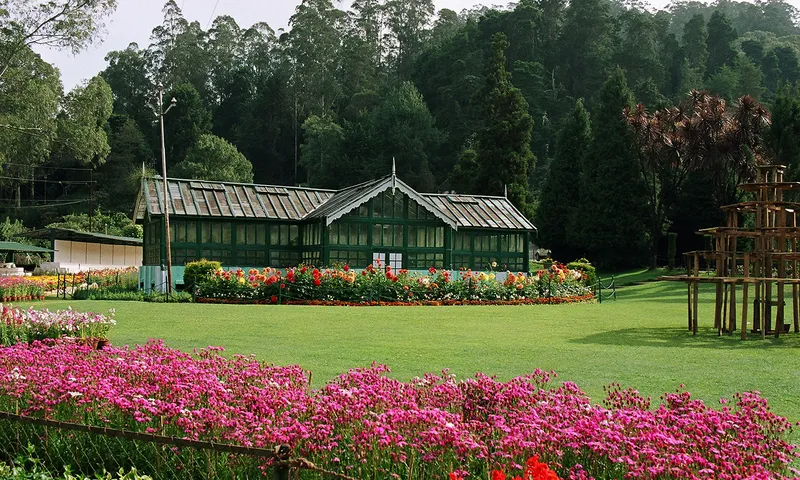
The Ooty Botanical Garden was laid out in 1897 by the Marquis of Tweeddale.
Begin your vacation in Ooty with a scenic ride on the Nilgiri Mountain Railway’s toy train. Started in 1899, the little blue train offers stunning views of misty forests, dark tunnels, and abundant birdlife as it chugs up the mountains. You can disembark at any of the quaint stations–Coonoor, Wellington, Aruvankadu, Ketti, or Lovedale–for an exciting day out.
The Botanical Garden, which is spread over 55 acres, is located 800 m from Charring Cross, the main market area, and houses more than 650 species of rare trees and plants. Not too far away is the Instagram-worthy Rose Garden, which showcases over 3,000 varieties of roses and has a picture-perfect ambience, courtesy rose creepers twining over tunnels and bowers.
The clear waters of Emerald Lake, reflecting the surrounding tea plantations and the circumferent Nilgiris, are sure to gladden the heart.
Head to Stone House, the residence of John Sullivan, the founder of Ooty, and now a museum with a wide collection of Toda and Badaga tribal artifacts, weaponry, apparel, and jewellery.
There is always something to do in Ooty: trek along the rolling Nilgiris, go for a boat ride and enjoy the sunrise/sunset, or plan a trip to Mudumalai Tiger Reserve, which shares its boundary with Bandipur Tiger Reserve and Wayanad Wildlife Sanctuary.
Engage in a bit of introspection after lighting a candle at St Stephen’s, a 19th-century, Gothic-style church surrounded by pine and eucalyptus trees.
Go on a tea trail that starts with a walk through the factories to know the basics of tea production and ends with a picnic amid the tea gardens.
Whether you are a tea lover or just curious to know more about how the brew is made, check out Tranquilitea’s hour-long tea tasting tour.
Where to stay: WelcomHeritage Fernhills Royal Palace
Palampur
Surrounded by pine forests and flanked by the Dhauladhar mountain ranges, Palampur is the tea capital of North India. The town’s name comes from ‘Palum’, a local word that means ‘abundance of water’, thanks to the numerous streams flowing down the mountains.
Wah Tea Estate, the largest tea plantation in the Palampur and Kangra region, organises tea tours and tastings all days of the week. You can try your hand at plucking or learn to taste like a tea sommelier.
The Palampur Cooperative Tea Factory offers free visits, where you can see the journey of tea.
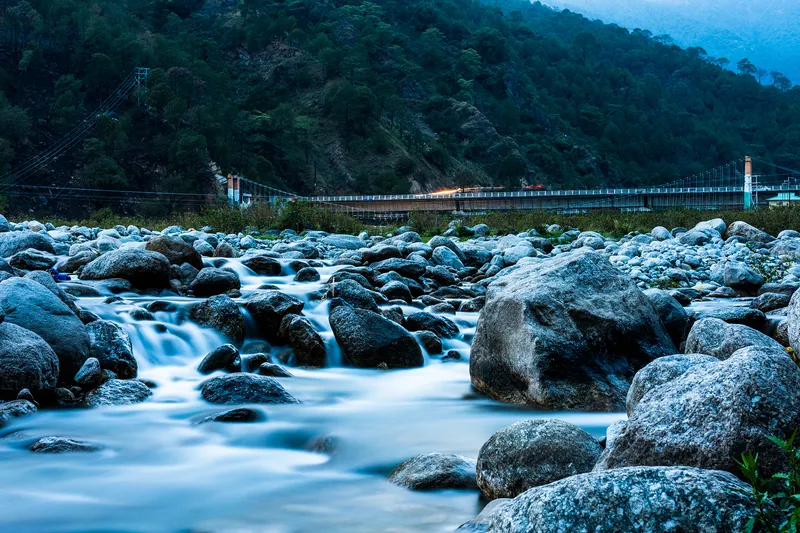
Located in Kangra region and known for its tea factory, Palampur also offers immense scenic beauty.
Apart from its tea plantations, the hill station located in Kangra Valley offers plenty of scenic sights and opportunities for enchanting outings.
Neugal Khad, barely 3 km from Palampur, set against the lofty mountains of the Dhauladhar range, is an ideal place to unpack your picnic basket.
The Dhauladhar National Park is a must-visit for animal lovers: the dense forest cover is home to different types of deer, sambhar, angora rabbits, red fox, black bears, and leopards.
There are plenty of beautiful temples nearby, including the Baijnath Temple, an ancient temple dedicated to Lord Shiva, renowned for its architecture; and Chamunda Devi Temple, which is extremely popular in the region. About 68 km away from Palampur are the Masroor rock-cut temples, which date to the 8th century, located on the banks of River Beas.
Palampur is also the perfect place to get into the thick of adventure. Visit Bir Billing, one of the top paragliding sites in Asia, for an adrenaline rush. The small village is also home to the Palpung Sherabling Monastery, among the oldest monasteries in India. You can also sign up for treks that go all the way up to Dharamshala and Kangra.
While at Palampur, don’t forget to try out authentic Himachali cuisine.
Where to stay: Lamrin Norwood Green
Chikmagalur
Officially called Chikkamagaluru, located about 250 km from Bengaluru, this verdant town may be synonymous with coffee (after all, this is where coffee was first grown in India), but it is also a haven for tea lovers.
Head out for a long tea plantation walk or a tea tasting at one of the many estates of Chikkamagaluru, including Kelagur and Goomankhan. Coffee lovers can sign up for a tour of Woodway Estates or the Jungle Greens Coffee Plantation Tour.
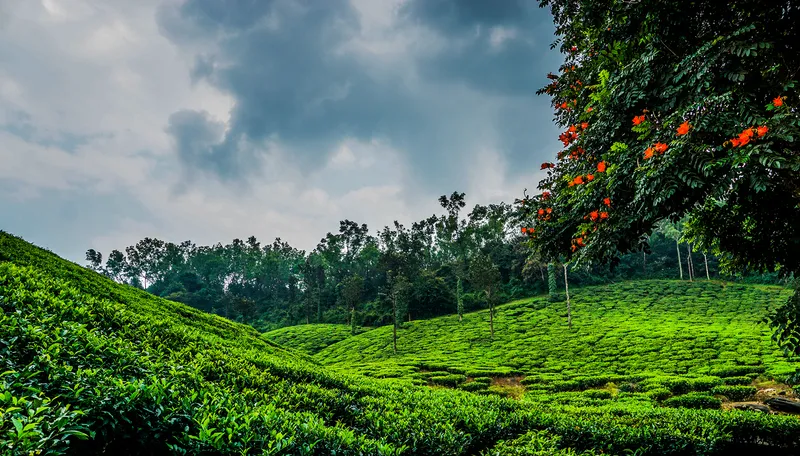
At an elevation of 3,400 feet, Chikamagur is dotted with tea and coffee plantations.
Located in the foothills of the Mullayanagiri range, the name ‘Chikmagalur’ translates to ‘younger daughter’s town’–the town is said to have been part of the dowry of the youngest daughter of a legendary chieftain who ruled here once!
There’s plenty to do in and around Chikmagalur.
Angadi village, the original home of the Hoysala rulers before their empire rose to its peak, has six beautiful old temples.
Belavadi, one of the largest temples built by the Hoysala kings, is an excellent example of their architecture. Ballalarayana Durga, a hill fort situated between the towns of Kottegehara and Kalasa and constructed during the 12th century, offers a gorgeous vantage point over the Western Ghats.
Chikmagalur is a walkers’ delight. At the Kuduremukh National Park, the Kudremukh range of hills overlooks the Arabian Sea and is a trekker’s paradise with lush green forests, grassy slopes, meandering rivers, and grassy slopes.
Other options include Mullayanagiri Trek, which takes you to the highest peak in Karnataka, Ballalarayana Durga Fort Trek, and Kemmangundi Trek. Try water sports in Belur or go river rafting in the Bhadra.
Wildlife lovers, take heart! Bhadra Wildlife Sanctuary, also known as Muthodi Wildlife Sanctuary, is a Project Tiger reserve and a great place to look for reptiles and more than 250 species of birds. The varied waterfalls in the region, including Hebbe Waterfall, Kallathigiri Fall, Sithavana Fall, Koodlu Waterfall, and Jhari Waterfall, are reasons enough to visit this beautiful town.
Where to stay: The Serai Chikmagalur
Munnar
This beautiful hill station in Idukki district is a tranquil haven in God’s Own Country. A summer destination favoured by the British, Munnar has undulating tea plantations, winding lanes, wildlife sanctuaries, forests, and aromatic spice plantations.
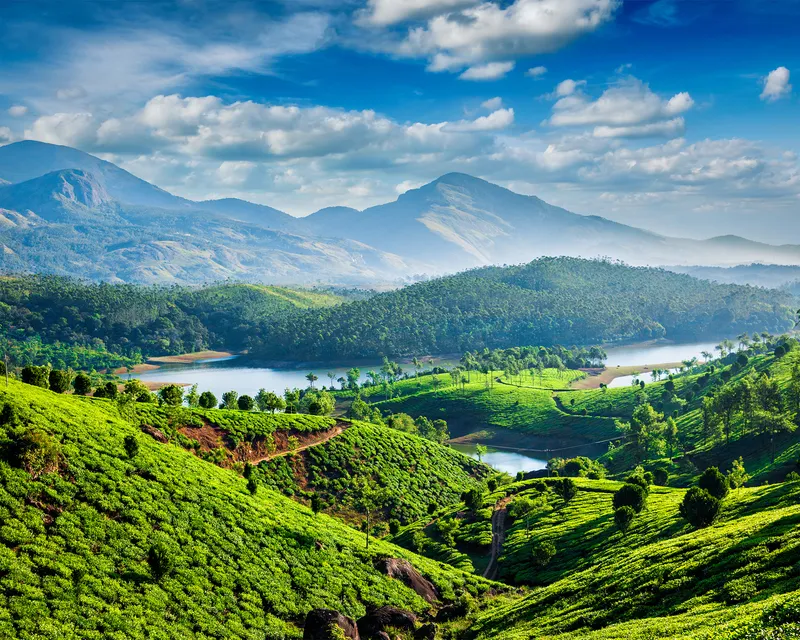
Known for its tea gardens, the picturesque town of Munnar also has a tea musuem.
Located at the confluence of three mountain streams, Mudrapuzha, Nallathanni and Kundala, the tea town is the perfect place to explore the journey of tea. A guided tea plantation and village tour offers a closer look at the process of tea making, from the plucking of the leaves to the final product.
Campers and trekkers can aim to conquer Anamudi, which is, at an elevation of over 2,695 m, the highest peak in South India.
Wildlife enthusiasts can visit Rajamala (about 15 km from Munnar), which is home to the Niligiri tahr. Half the world’s population of the tahr, a rare mountain goat, can be found here. For those who like water, Mattupetty lake and dam offers beautiful picnic grounds.
Munnar also has an assortment of spice plantations and home stays which offer tours of the spice gardens. Pick some vanilla, pepper, cardamom, clove and nutmeg to take home.
Where to stay: Windermere Estate
Darjeeling
Nestled among the magnificent Himalayan range and surrounded by infinite slopes of tea gardens, Darjeeling continues to be West Bengal’s tourism mainstay.
There’s a lot to do here.
At Tiger Point, you can watch the sun rise, the rays spilling gold and red over the Kanchanjunga. If the sky is clear, you can even spot Mount Everest, the world’s highest mountain.
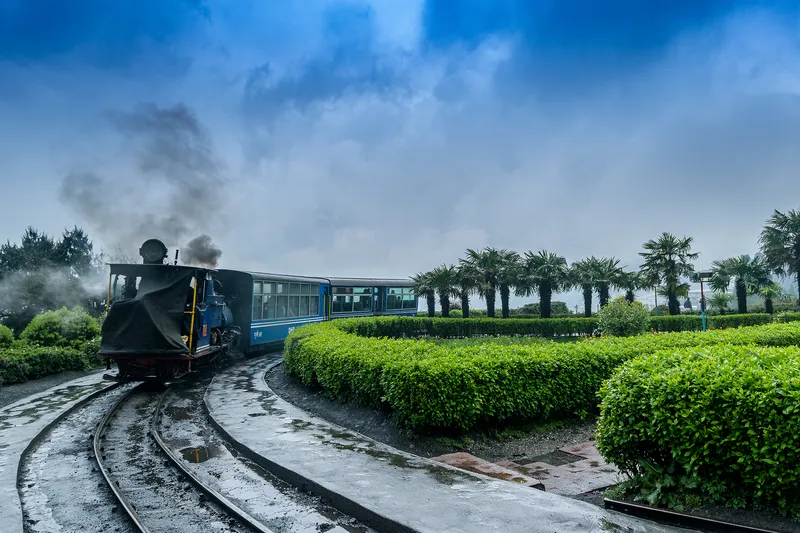
After exploring the tea gardens, take a ride on the heritage Darjeeling Himalayan Railway toy train.
Walk around and discover colonial buildings and churches, Buddhist monasteries and Hindu temples, and botanical gardens.
You can also do a tea-tasting tour at one of the tea gardens of Darjeeling. Visit tea estates like Glenburn, Goomtee, Happy Valley, and Ging, and sign up for a tea plucking tour.
The steep narrow streets of Mall Road are chock-a-block with vibrant shops selling souvenirs and handicrafts. Shop till you drop, and also enjoy steaming hot cups of tea and Tibetan fare (momos and thukpas mainly).
If time permits, don’t forget to take the steam locomotive powered toy train of the Darjeeling Himalayan Railway– from Siliguri to Darjeeling. The train was listed as a World Heritage Site by UNESCO in 1999.
Where to stay: Makaibari Tea Estate
So, if you are looking for a holiday you’ll never forget–amidst misty mountains, roaring waterfalls, lush green forests, rich wildlife, and sprawling tea estates, do check out these chai destinations in India.
(Images: Shutterstock)
Edited by Swetha Kannan







